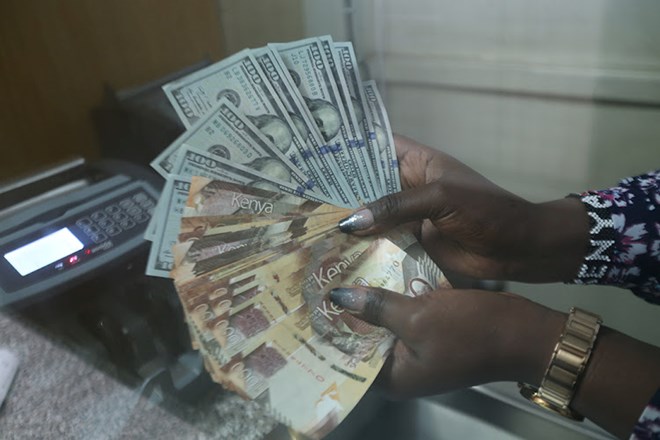
Tuesday April 9, 2024

The Kenyan shilling continued to rally against the US dollar on Tuesday trading at Sh127, marking strong growth in the foreign exchange market.
At the closing of markets Monday, commercial banks quoted the shilling at Sh129.5 against the dollar.
The Kenyan shilling was at its weakest in January 2024, exchanging at Sh160 against the dollar.
A week ago, the Kenyan shilling was exchanged at 133.99 per dollar, a further drop of six shillings.
Central Bank of Kenya (CBK) quoted the shilling at Sh139 on March 12.
It was the first time the CBK officially quoted the shilling at Sh139 since June 2023.
During the same period, the shilling also recorded gains against other currencies with the CBK quoting it at 178.85 against the Sterling Pound and 152.32 against the Euro.
While it is not predictable on where the shilling will settle at against the dollar, CBK Governor Kamau Thugge has already indicated that they would intervene should it continue to fall beyond its expected limit.
“We’ll allow the inflows and demand and supply of foreign exchange to determine that level but we have to have the right balance,” Thugge said.
“We must ensure that the exchange rate is broadly reflecting the market economic fundamentals and that the rate is that which encourages exports, that which is not punitive to imports,” he added.
The CBK’s intervention in the foreign exchange market is seen to have played a role in supporting the shilling's appreciation against the dollar.
Favourable export conditions and steady remittance inflows may have contributed to the shilling's strength.
In November 2023, Treasury Principal Secretary Chris Kiptoo urged more Kenyans to invest more in foreign exchange earners, such as the tourism sector to take advantage of the situation.
While exporters now earning less, importers are saving on costs since the US dollar is the main currency of international trade.
With Kenya importing most of the manufacturing raw materials, it meant that a strong Shilling against the dollar would reduce manufacturing costs and subsequently lower the cost of goods.
External debts, Thugge said, currently stood at $38 billion.
The continued appreciation of the shilling against the dollar has seen the government save Sh40 billion per every shilling.
This has also impacted positively on the livelihoods of Kenyans as the petrol prices has significantly dropped as compared to electricity bills which is also expected to come down.